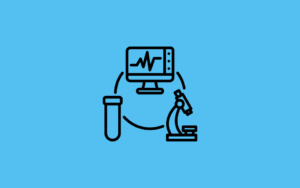
Introduction
Trends, trends, trends. Lately, haven’t we heard way the word trends in a billion ways of applications, especially in the healthcare arena? Healthcare marketing trends have become the talk of the year 2022.
What are integrated healthcare systems?
A common junction wherein the consumer’s convenience coincides with just the right kind of services required in collaboration with the healthcare professionals. For example, a remote consultation of a patient from home gives the freedom and space to have the appointment at ease without even stepping out. They take a proactive charge of self-care. Virtual health, clinical data-sharing, access to electronic records all have played a crucial role in this.
What are consumer healthcare products?
Consumer healthcare products include the leading brands of iron supplements, various multivitamins, products used in the treatment of flu, cold, fever, various kinds of allergies, personal hygiene products, sleep-support systems, and many more.
Before diving deep into what are the ‘trends’ that lead to integrated healthcare systems in 2022, let us first understand the basic factors because of which trends really matter for a healthcare marketer?
1. Driver’s seat is pre-occupied
The earlier B2B healthcare marketers grab this truth, the better for their business. Patients and healthcare pillars like caregivers, front-line workers, hospital managements, healthcare administrators, and others are the agents driving the system. Plethora of choices with the patients like online consultations, telehealth, access to records, etc. Have made them the actual king.
2. Consumer as the key point of innovation
Today, most of the successful organizations across the world work backwards, starting with the customer as the focal-point and thus innovating. By studying the shopping patterns of the tech-savvy online consumers, it is possible to discover the unsaid. Also, the customer reviews, feedback and grievances are gold-mine of information to improve on products and services.

3. Healthcare industry on a ‘healthcare spree’
Private players are on the fore-front of healthcare industry. Ever since the onset of pandemic and even before that, private players have been in the lead to providing healthcare services. Consolidation of healthcare services has propelled the pace of healthcare industry with escalating levels of alternative levels of service providers. Teams led by Doctors paint a new picture of leadership.
Catching the main essence of this blog, we have come to the core of integrated healthcare systems in 2022.
A whole-some marketing approach
It is high time to embrace a wholesome marketing approach which wraps up the various generations and culture uniformly. This fairly indicates the buying habits, preferences and perspectives of the patients.
- Explore the four Ws- Marketing has risen beyond Ps and Cs. Wondering what are these? The four Ws of B2B healthcare marketing are: Who, What, Where, Why.

Who is the targeted audience?

What is the actual requirement?

Where is the point of interaction?

Why should they select you?
Integrated Healthcare systems have become the biggest demand for healthcare consumers in 2022

1. A customer-centric approach- Starting from small clinical settings to big hospitals, all kinds of groups have established their digital presence. Providing facilities like online video consulting, access to reports and records, telehealth, remote monitoring has become a mandatory counterpart of patient footfalls in the medical brick and mortar scenario. Not to forget that older citizens find it hard to comprehend websites and also navigation is a herculean task for them.
2. Reimbursement protocols- Initially considered as a big game-plan for frauds etc., Covid-19 has led the payers to change their mind regarding reimbursements for telehealth services which is likely going to be a pillar-service and not a mere temporary solution for the time being. As per a Mckinsey report Telehealth utilization has stabilized at 38 times more than pre-pandemic days. The reason behind such proliferating numbers is definitely convenience, like- ease of access, security, privacy concerns, efficient outcomes, timesaving and many more.
3. Lowering the challenging bars – There is no doubt about the fact that digital channels incur lower costs, when compared to the offline or traditional channels. Despite this, many healthcare marketing organizations cannot provide the required. Healthcare applications/websites/portals that do a good job and reduce the pain of those already in distress are not so abundant. If they really want to improve the quality of integrated services, factors like monitoring of healthcare metrics, cost-transparency, proper sync of the appointments, reminders, etc. are a must.
4. Consider the person – Sometimes it is observed that physical ailments have arisen partly because of unfulfilled social needs like socio-economic vulnerabilities, demographic challenges, coupled with factors like sleep-deficiency and stress. The healthcare products/service providers must optimize the offerings to meet these as a complete package. The social determinants of health must be taken into consideration while planning the access points of such healthcare services and must be expanded.
5. Being at the right place at the right time- For a Healthcare products manufacturer and service providers to give their best shots, hiring the service of the renowned B2B healthcare database providers is a must. With tailor-made lists, it is easier to reach an ideal audience and promote the offerings across cross-borders and niche areas equally.




